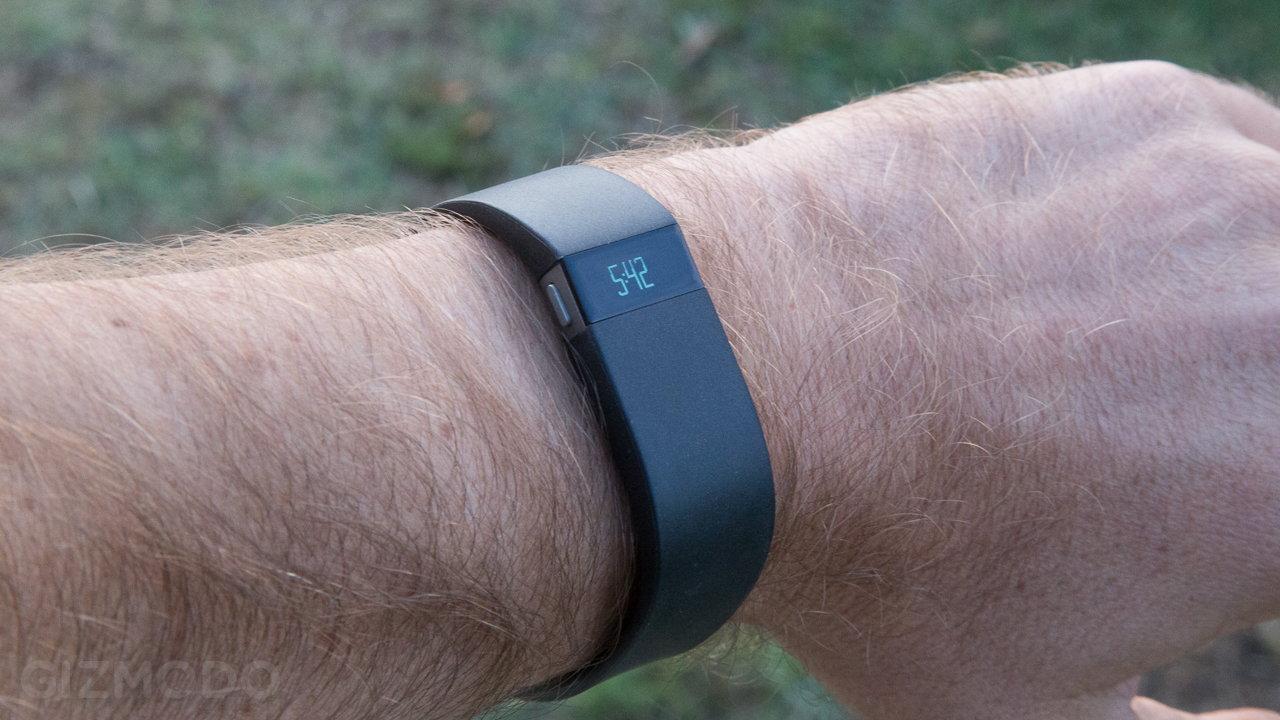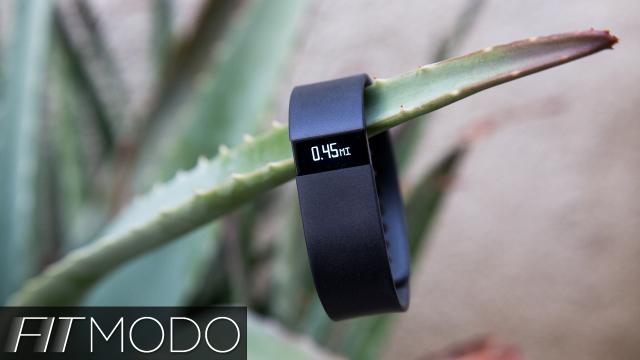Fitbit did a lot of things very right when it made the One, its tiny activity-tracking pod. But then the company — caving to peer pressure from the likes of Nike — made the Fitbit Flex wristband. There’s nothing wrong with that form-factor, but the Flex lost a lot of the functionality that made the One so great, and it felt like a big step backwards. Today the company is releasing the Fitbit Force, and it’s exactly what the Flex should have been.
Like the Flex, the Force is a silicone wristband. The band is just slightly wider, and it’s a little bit thicker. It still fits comfortably under the cuff on a long-sleeved shirt, though, and doesn’t make it look like you have a horrible arm-fracture. The first difference you’ll notice from the Flex is that the Force has a rather lovely and blue OLED screen.

Using that screen and the lone button on the left side of the band, you can scroll through how many steps you’ve taken, the estimated total distance, calories burned, floors climbed, time of day, and the total time you’ve been active. Floors climbed is something the Flex couldn’t do because it lacked an altimeter, and it’s an important addition, as it gets much better data for estimating the true amount of calories you burn. Time of day might not sound like much of a feature, but if it’s something you’re going to wear on your wrist all day, it had better be able to tell you what time it is. It also has a stopwatch.

Like the other Fitbits, the Force can track your sleep to show you how much you are (or aren’t) getting, and how much you’re tossing and turning, and it has a vibrational motor so it can wake you up with a silent alarm. It can withstand a splash or two, but it isn’t waterproof. This information and your other stats are displayed in a very nicely designed visual layout on the website, or in the Fitbit smartphone apps.
It comes with an included USB dongle for your computer, and it will wirelessly sync anytime you’re within six metres of your computer (provided you install some software). It operates on the Bluetooth 4.0 Smart (Low Energy) protocol, which means it will wirelessly sync throughout the day with your iPhone or with certain Android devices (currently just Samsung devices from the Galaxy S3 on, though hopefully that will change soon). The Force has NFC built in which should have auto-paired it with my Android phone, but the phone never picked up the NFC signal, so the jury is still out on that.
One interesting feature which will be rolling out soon for iOS 7 users (and maybe for Android devices later) is that you can set it to notify you of incoming calls. It will vibrate and display the name of the caller if it’s in your contacts, or it will show you the number. You can’t answer or dismiss calls, but it could save you an exhausting reach into your pocket (or dig through the couch cushions). That feature will be rolling out soon.

Fitbit claims the battery will last 10 days between charges. We’ve had it on for two solid days now and the battery has barely a nick taken out of it, so that sounds like a reasonable claim, though more testing is necessary to confirm. In general the band is pretty comfortable. It doesn’t really get in the way, and it’s thin enough that I can type with it on and it doesn’t dig into my inner wrist. Also, subjectively, it looks nice, and it wouldn’t be an eyesore even if you were dressed semi-formally. It does snag the occasional wrist-hair, though.
The Fitbit Force is being sold for $US130. That’s $US30 more than the Flex and the One. It’s certainly a lot better than the Flex, but if you prefer something lower profile (i.e. something that stays in your pocket rather than on your wrist), then you should probably just go with the One, though you will have to transfer it to/from a soft wrist-sleeve every night for sleep monitoring, which is kind of a pain. It’s also worth noting that when we reviewed the Flex we found it to be way less accurate than the One. Hopefully Fitbit has fixed that for the Force. We’ll be putting it through its paces and will let you know soon, along with Australian pricing and availability. [Fitbit]
